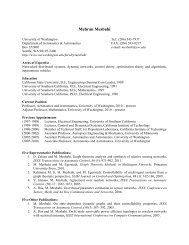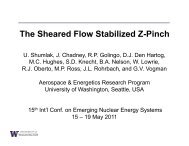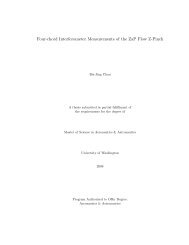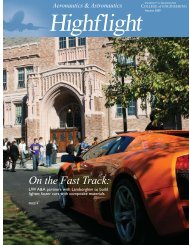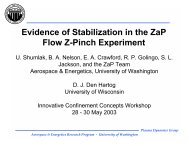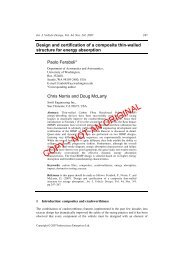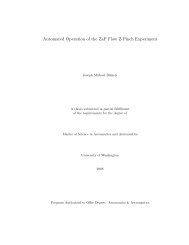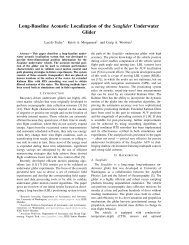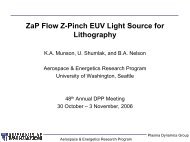Distributed Reactive Collision Avoidance - University of Washington
Distributed Reactive Collision Avoidance - University of Washington
Distributed Reactive Collision Avoidance - University of Washington
You also want an ePaper? Increase the reach of your titles
YUMPU automatically turns print PDFs into web optimized ePapers that Google loves.
14<br />
Note that the orientation (defined by the ˆt, ˆn, and ˆb vectors) is only used as a local<br />
coordinate frame for the DRCA algorithm. The orientation does not directly affect the<br />
dynamics (r and v), and as such can be arbitrary. However, many vehicle’s input constraints<br />
are related to their orientation, and so it can be useful to tie this local coordinate frame to<br />
the actual body coordinates <strong>of</strong> the vehicle.<br />
We constrain the input by use <strong>of</strong> an arbitrarily varying constraint set, u i ∈ C i . The only<br />
requirement is that C i always contain the origin. A simple example <strong>of</strong> an input constaint set<br />
that limits maximum acceleration and velocity is<br />
C i =<br />
{<br />
u i ∈ R 3∣ }<br />
∣ ‖ui ‖ ≤ u max , ‖v i ‖ ≥ v max =⇒ u T i v i ≤ 0 . (2.2)<br />
For the DRCA algorithm, one must choose a set <strong>of</strong> rectangular constraints R i (which<br />
can also vary with time, state, etc.)<br />
for each vehicle that encloses its C i , as well as a<br />
corresponding saturation function, S i : R i → C i . The function S i must be continuous, must<br />
become the identity map for any u ∈ C i , and must preserve the sign <strong>of</strong> each component <strong>of</strong><br />
u when projected onto the ˆt, ˆn, and ˆb directions. In this example, one can choose<br />
R i = { u i ∈ R 3∣ ∣ − umaxi ≤ u ti ≤ u maxi , . . . } , (2.3)<br />
and<br />
⎧<br />
u<br />
u max i<br />
⎪⎨<br />
, ‖u ‖u i ‖ i‖ > u max<br />
S i = u i − v iu T i v i<br />
v max<br />
, ‖v i ‖ ≥ v max , u T i v i ≥ 0<br />
⎪⎩ u i , otherwise.<br />
(2.4)<br />
An example <strong>of</strong> how more complex vehicle dynamics can be represented by this simple<br />
model with an appropriate choice <strong>of</strong> input constraint set follows. Let us model a vehicle<br />
which can go forward with variable speed, can turn in two axes (a 3D unicycle model), and<br />
has limits on its turn rate, forward acceleration, and maximum speed. One way to describe<br />
the model mathematically is by



